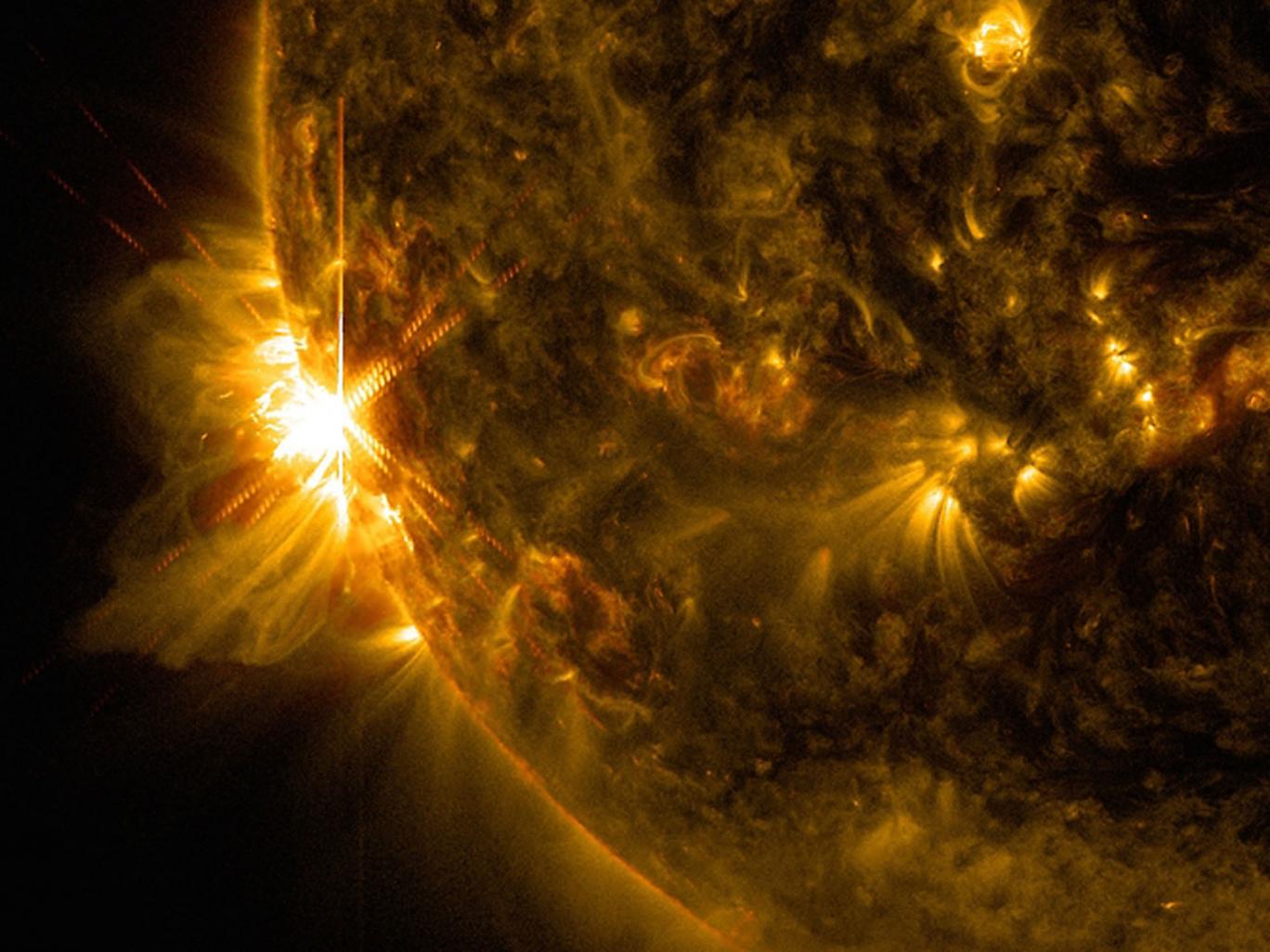Solar storm scientists prepare for geomagnetic event that could destroy technology across the world for years
Estimates suggest that a catastrophic event could lead to problems costing between $600 billion and $2.6 trillion to fix

Scientists are preparing for a solar storm that could break communications for years and potentially put life on Earth in danger.
Many people are still unconcerned or even unaware of the possibility of a geomagnetic storm coming from the sun that could cause huge damage to life on Earth. But such a possibility is referred to as a “low probability but high-impact event” that is being planned for by agencies including the US Department of Homeland Security and Nasa, and scientists have warned that humanity needs to do more to deal with it.
Space weather has previously caused some problems, lightly disrupting technology and leading to visible changes. But none recently have been as dramatic as the infamous Carrington Event of 1859, which caused one of the worst known geomagnetic storms and would throw off much communications technology if it happened today.
If such an event were to hit the Earth, it could stop communications satellites from working, break GPS systems and stop planes from flying. It could also lead to even more lasting problems, like wiping out data from computers’ memory.
Its effects could last for months or even years, as authorities wold have to work to repair the infrastructure that the modern world relies on. Estimates from Lloyd’s of London suggest that fixing all of the problems could cost between $600 billion and $2.6 trillion.
Now the US government is looking to work more seriously to stem some of those effects — including getting better at predicting space weather and dealing with problems it would cause.
"We know there is a gap in our ability to assess vulnerability and consequences," said Jack Anderson, a senior analyst for the US Department for Homeland Security, at a conference held to plan for the “big one” in storm events.
At the moment, scientists are unable to predict how issues would pan out as they knock on to each other. "Once systems start to fail, (the outages) could cascade in ways we can't even conceive," said Daniel Baker, director of the Laboratory for Atmospheric and Space Physics at the University of Colorado, at the same event.
But the US government is at a “fundamental turning point” in addressing the problems, according to Tamara Dickinson, a senior staff member at the White House’s Office of Science and Technology Policy.
Last year, the Department for Business Innovation and Skills published a report into the risks to the UK of severe space weather. An event such as a coronal mass ejection could wreak havoc across the UK’s
Join our commenting forum
Join thought-provoking conversations, follow other Independent readers and see their replies
0Comments